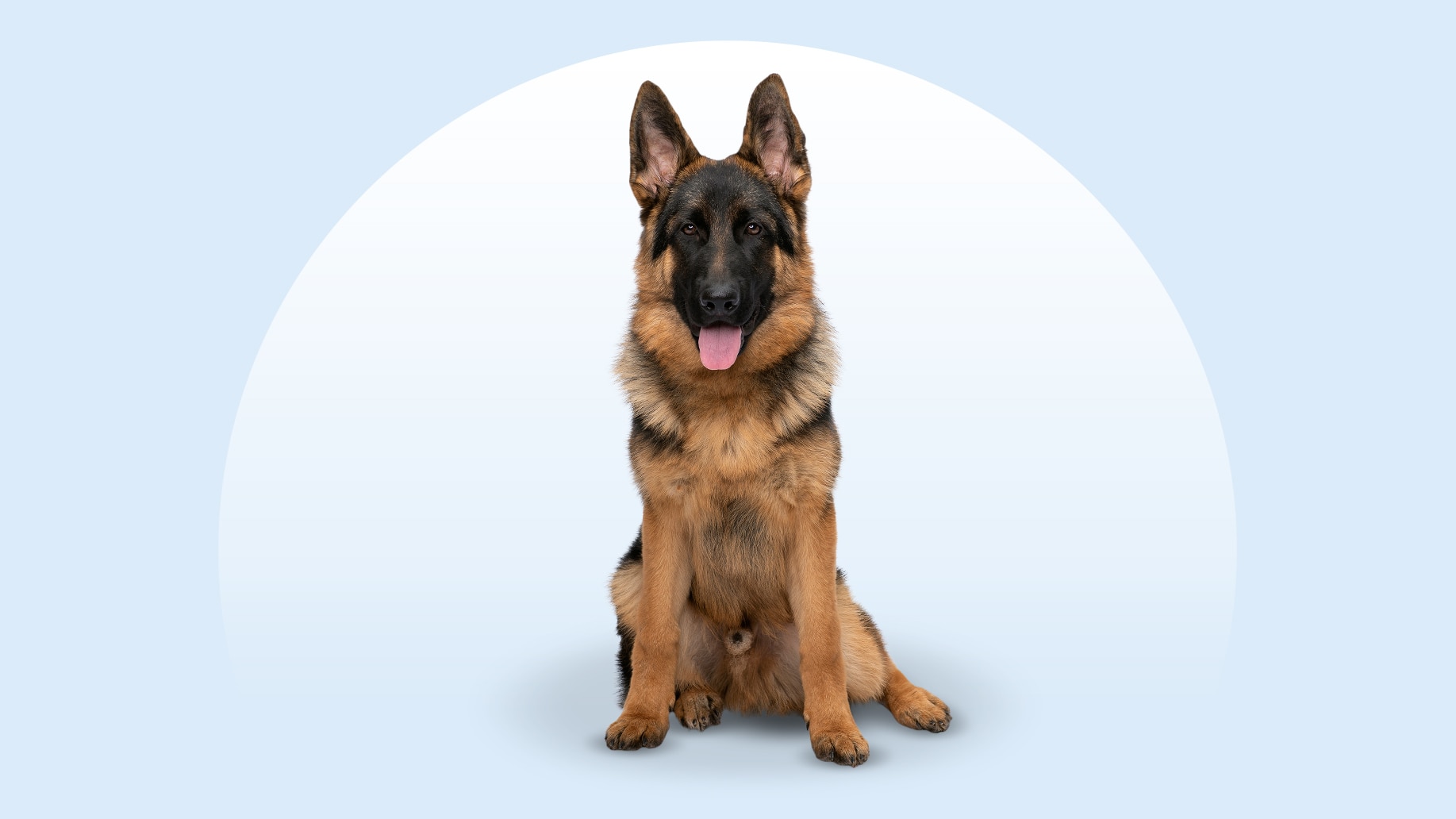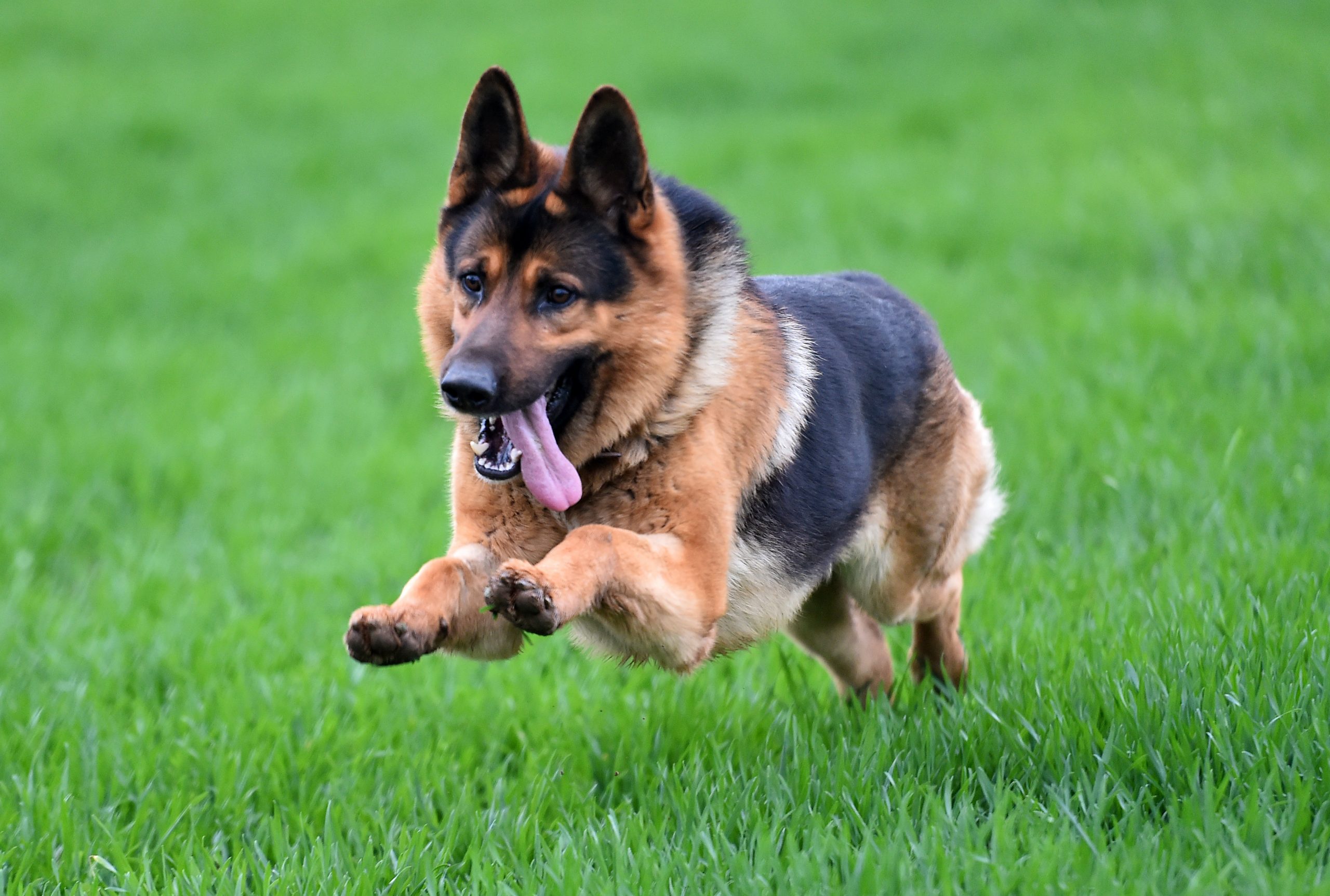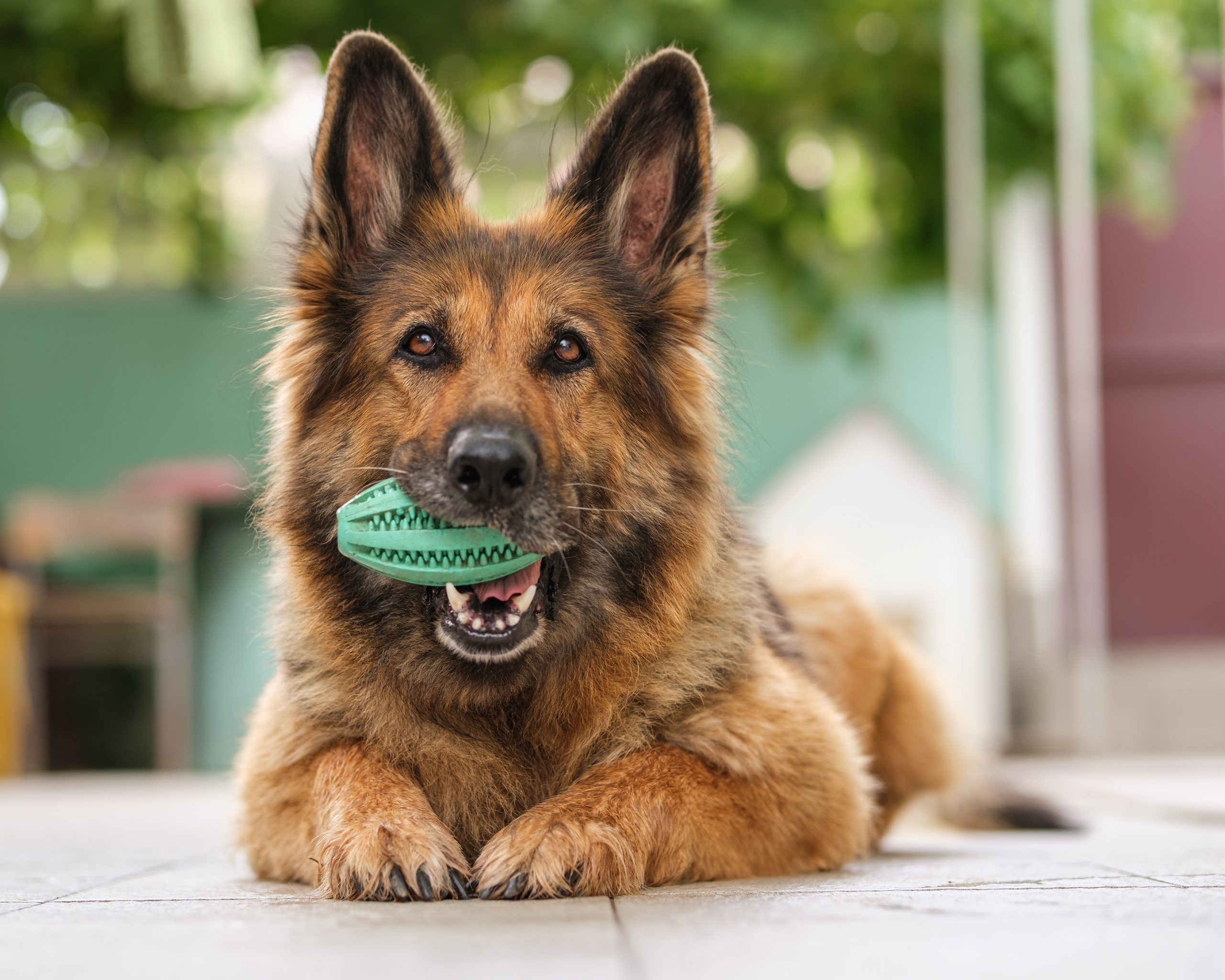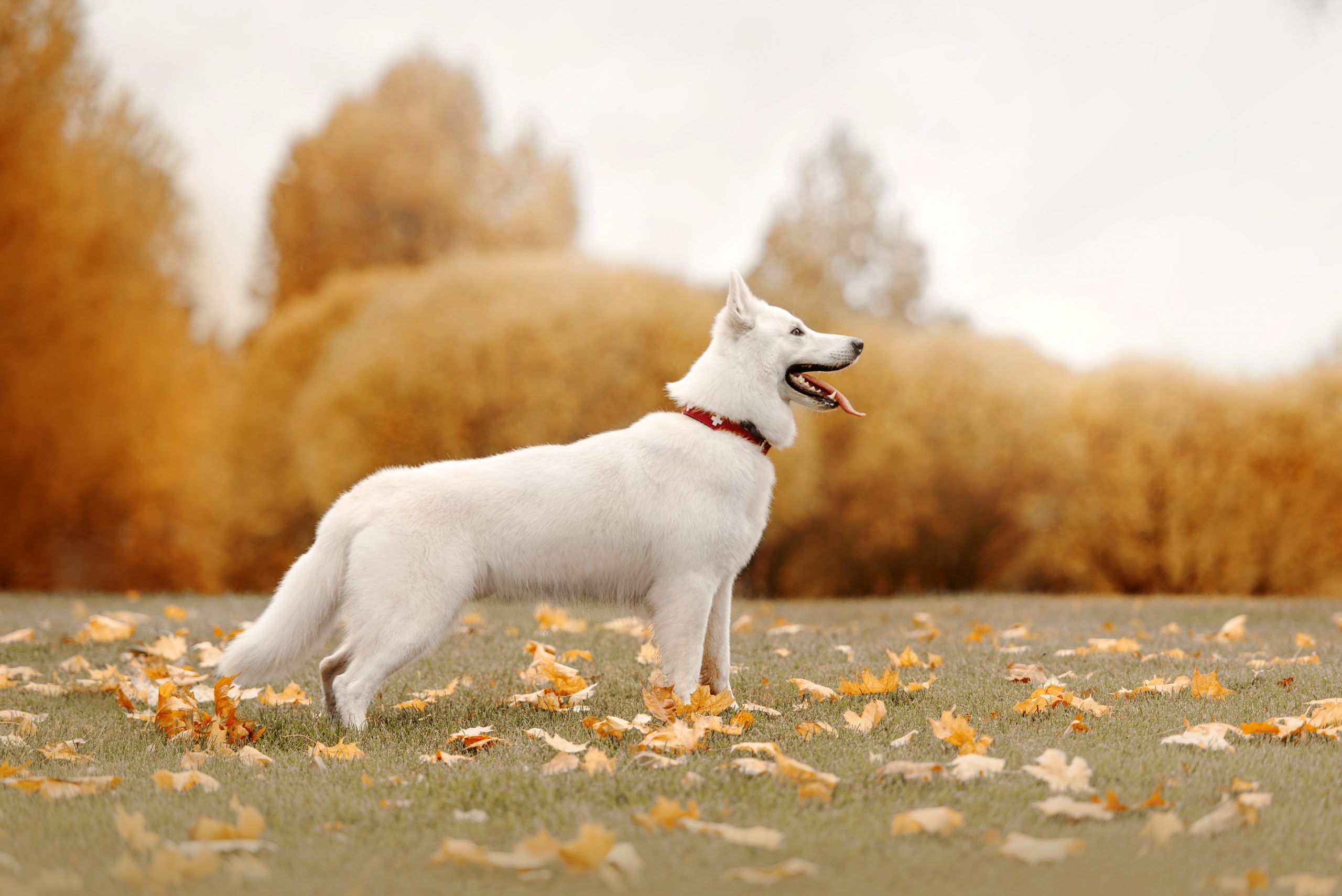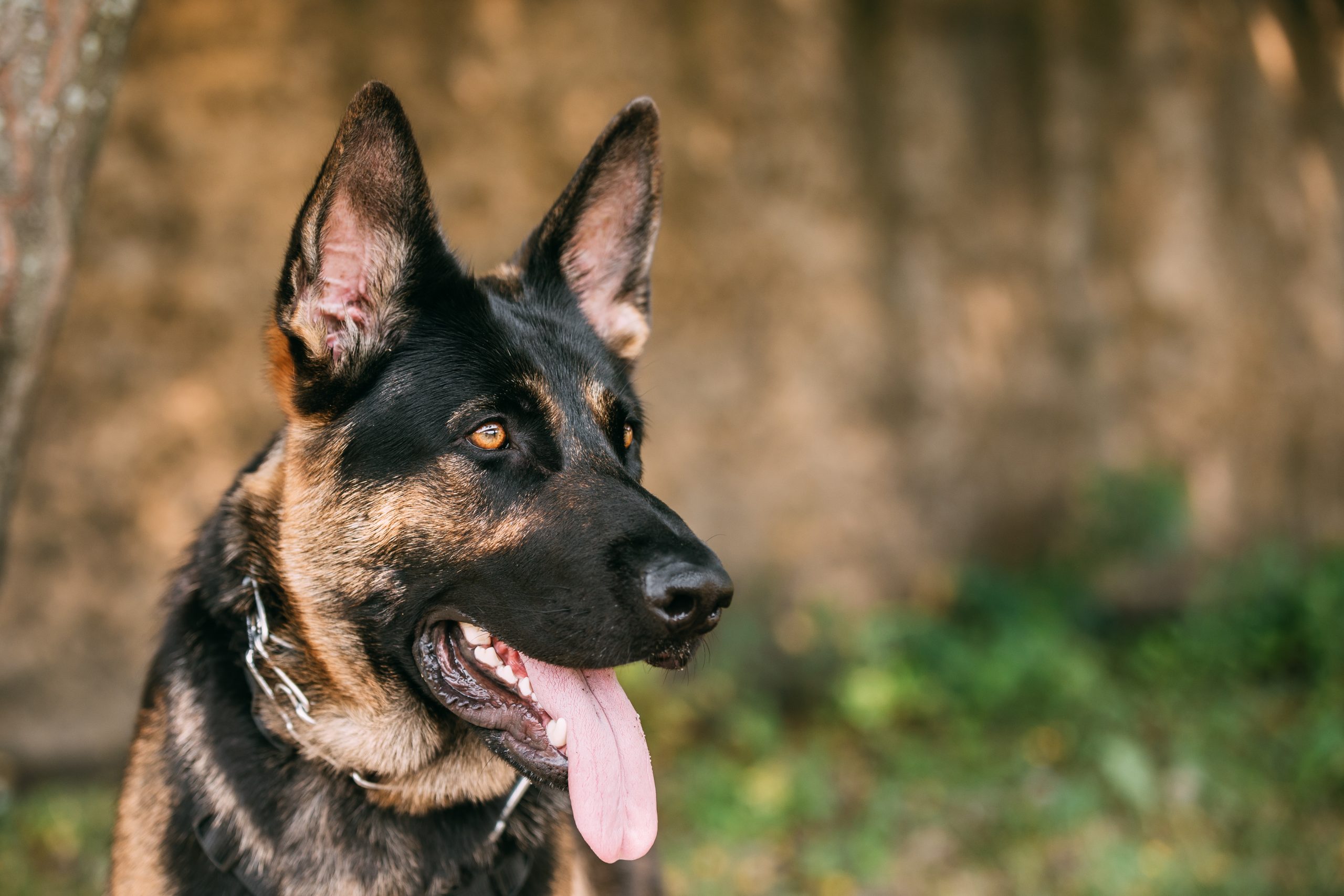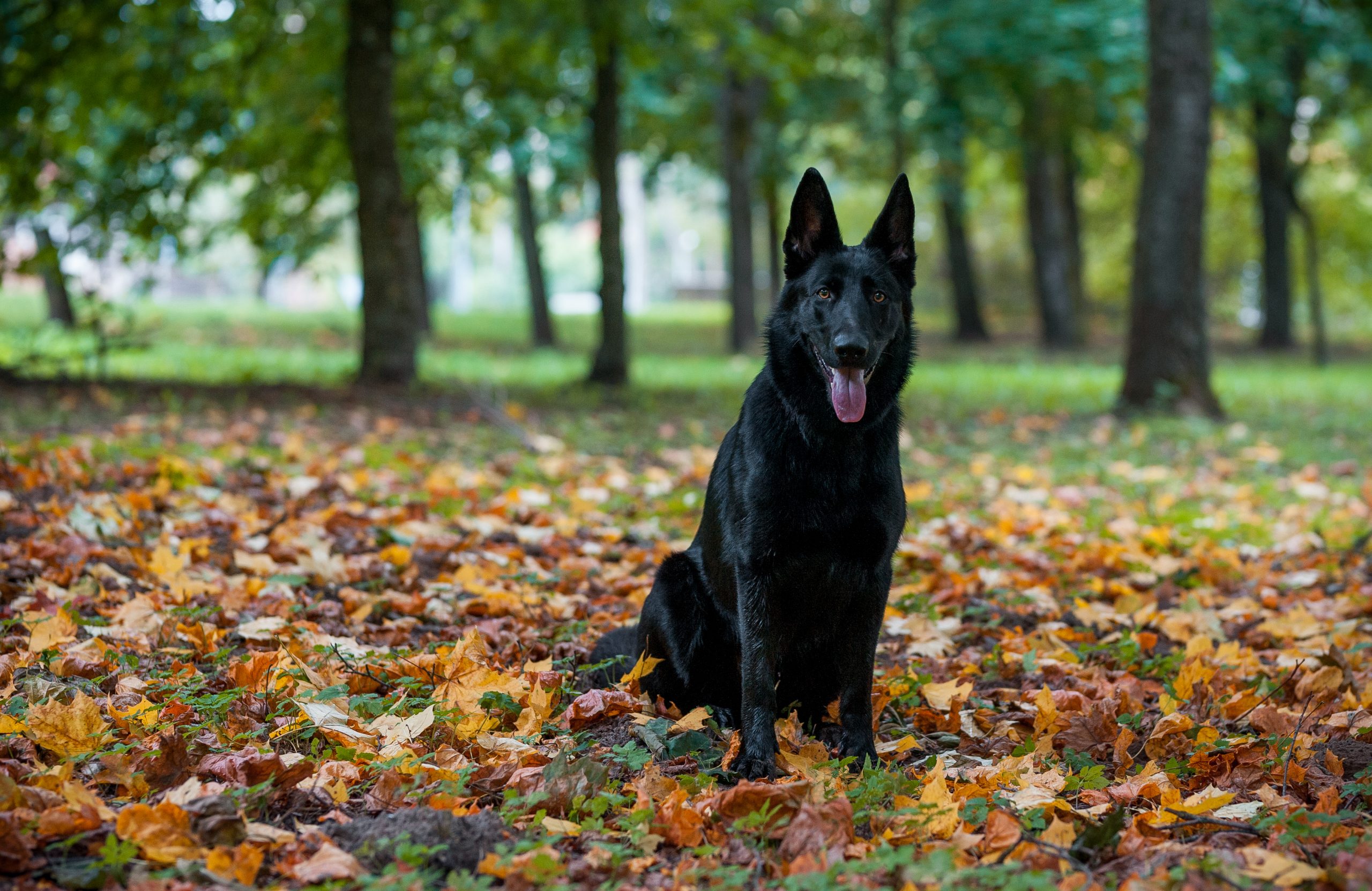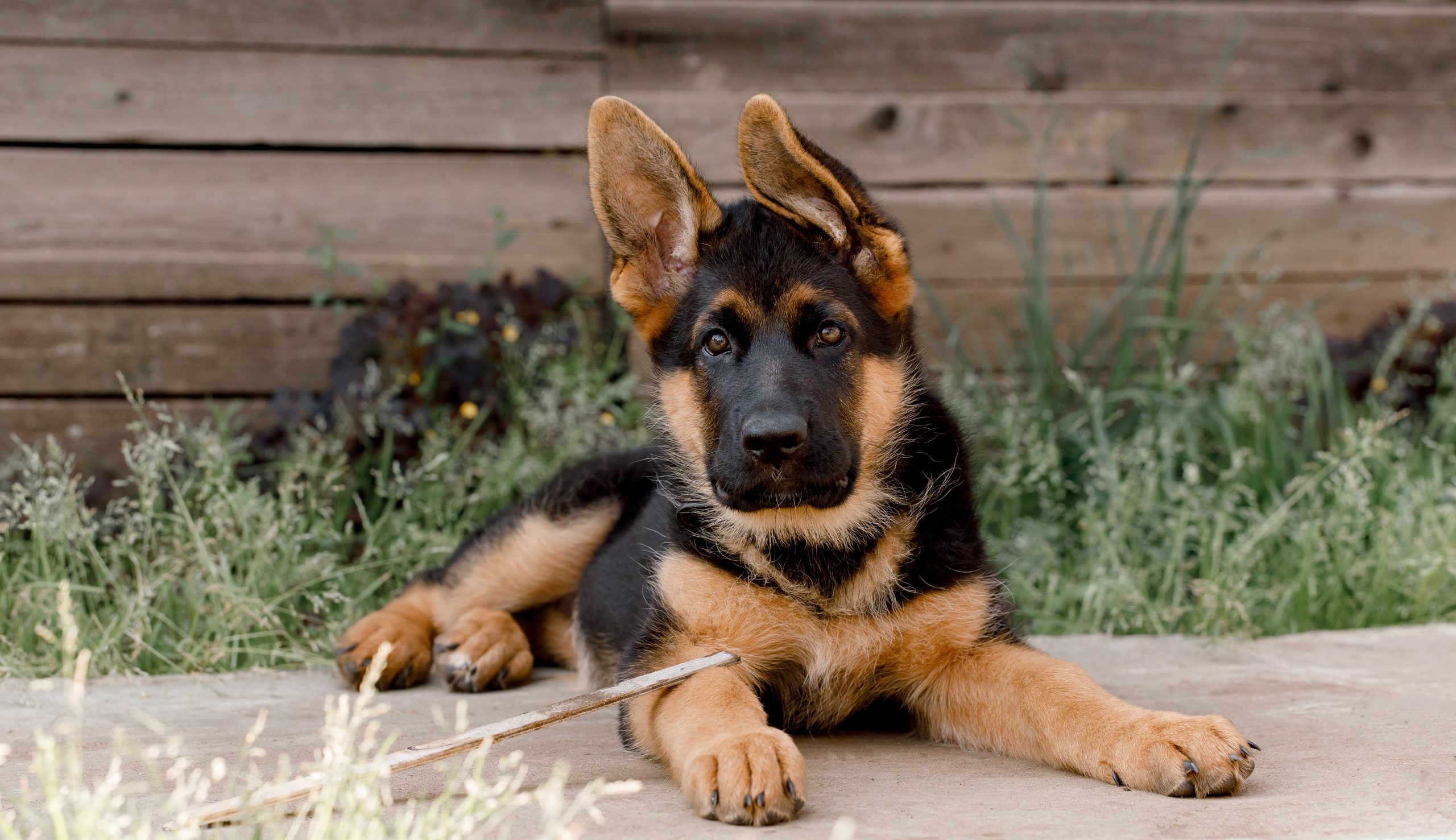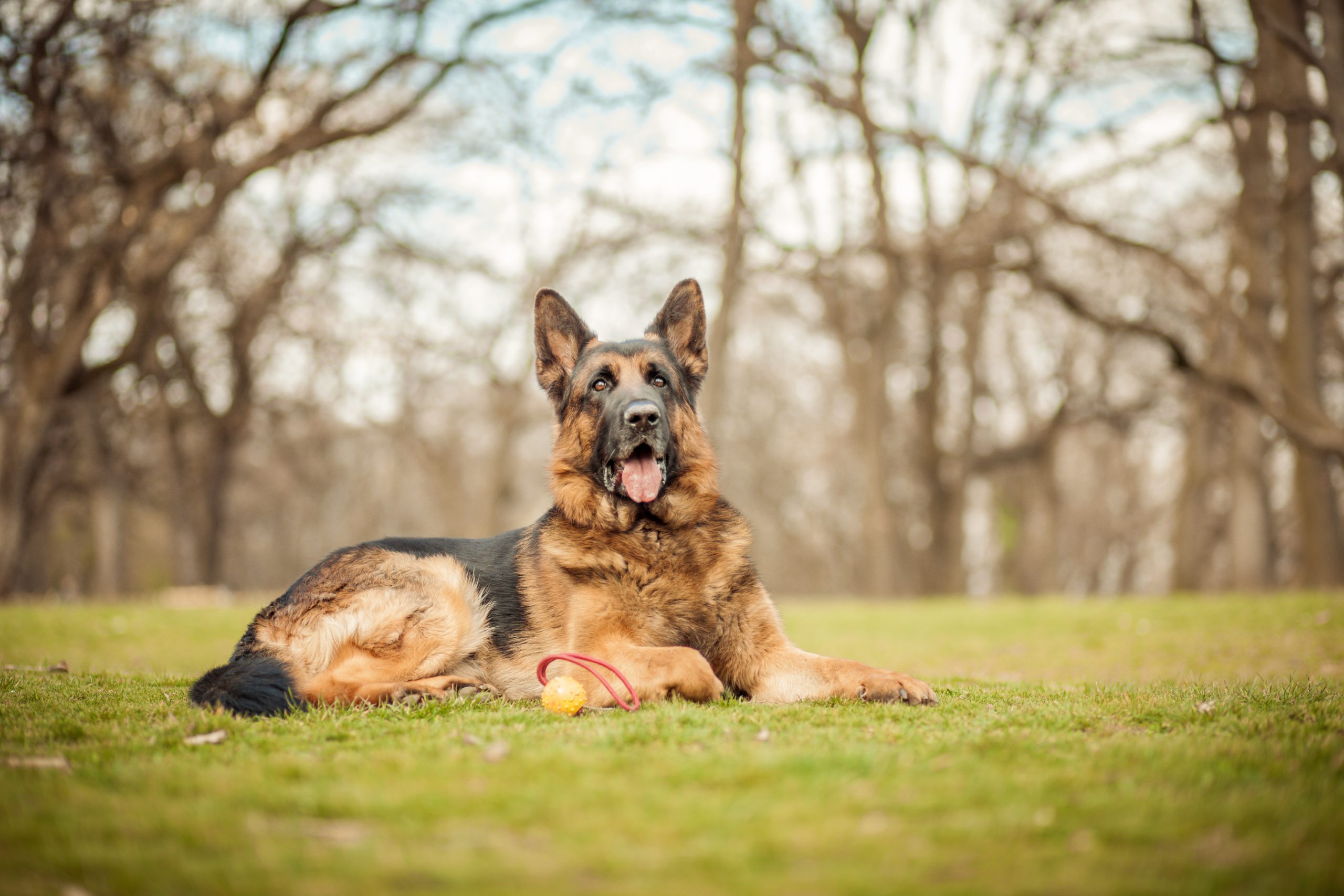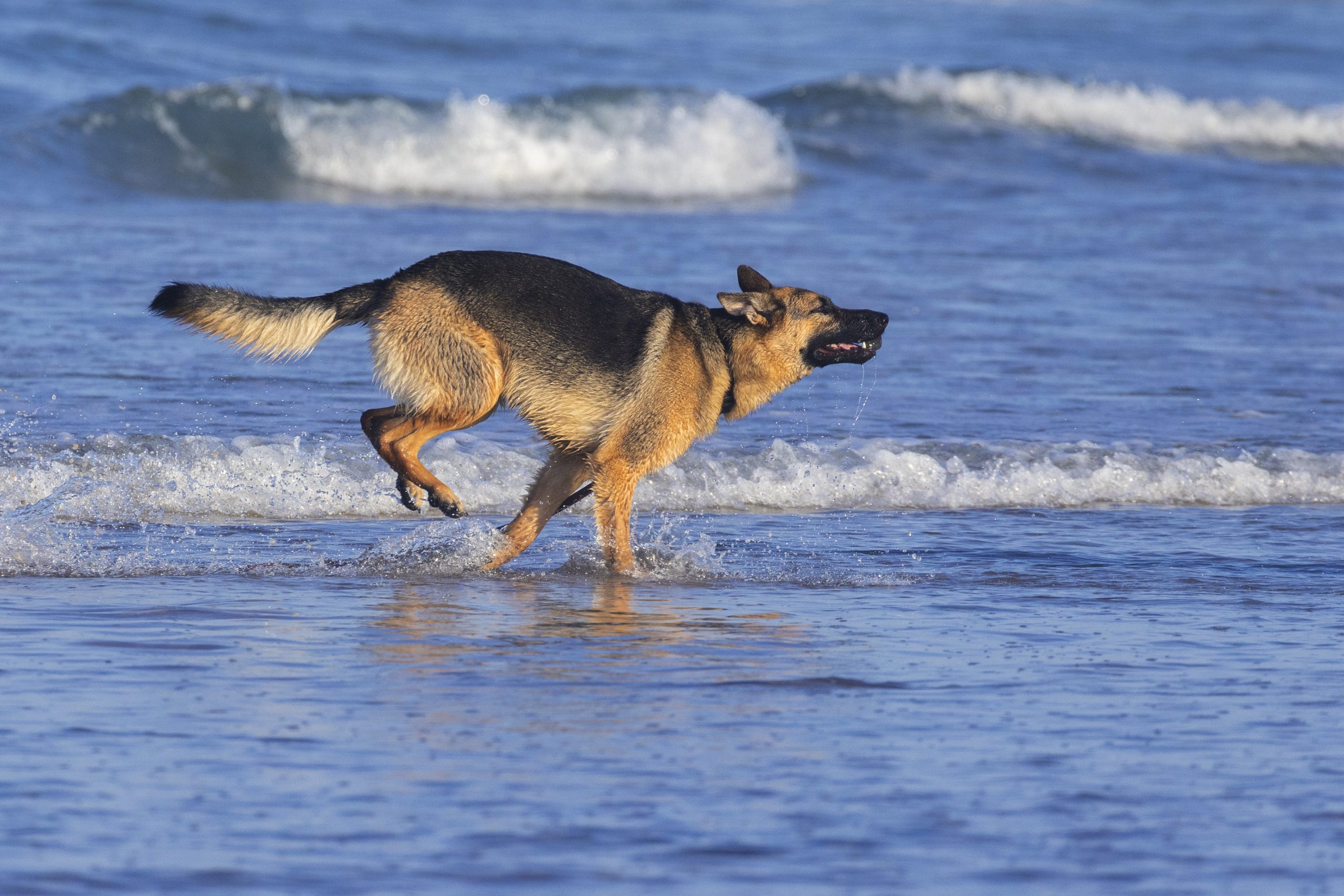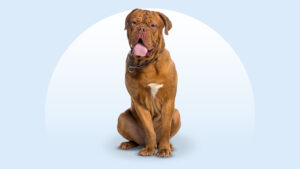German Shepherd
Updated March 25, 2025
German Shepherd
Updated March 25, 2025
German Shepherds are super pups: These dogs are active, smart heroes who, at the end of the day, just want to be loved by their person. They’re often respected service dogs (here’s saluting you, K9 cops) as well as loyal companions for pet parents and families.
Brave, Heroic, Loyal
50–90 pounds
22–26 inches
12–14 years
Black, Black and Tan, Black and Cream, Black and Silver, Black and Red, Gray, Sable, White, Liver, Blue, Bicolor
It’s not unusual to see a German Shepherd who’s a K9 cop, helping police with their duties (whether in real life or on television). But behind the scenes, the German Shepherd is a mushy pup who loves their family with all their heart.
That doesn’t mean they want to hang out at home, though; they’d pick an all-day hike over a movie marathon any day.
If this bright, active pup had a motto, it’d probably be, “Work hard, play hard.” Sure, it’s a little basic, but they don’t care—they’re already 10 steps ahead of everyone else, whether climbing trails, leaping for a tennis ball, or brilliantly leading a search and rescue crew.
German Shepherd Characteristics
German Shepherd Appearance
With their poised ears and dark eyes, the German Shepherd has an aura of authority and nobility.
But they’re not all business. These dogs have bushy, slightly curved tails that wag back and forth when they’re out adventuring with their family or being rewarded for a job well done. They usually have straight backs and muscular frames that are longer than they are tall.
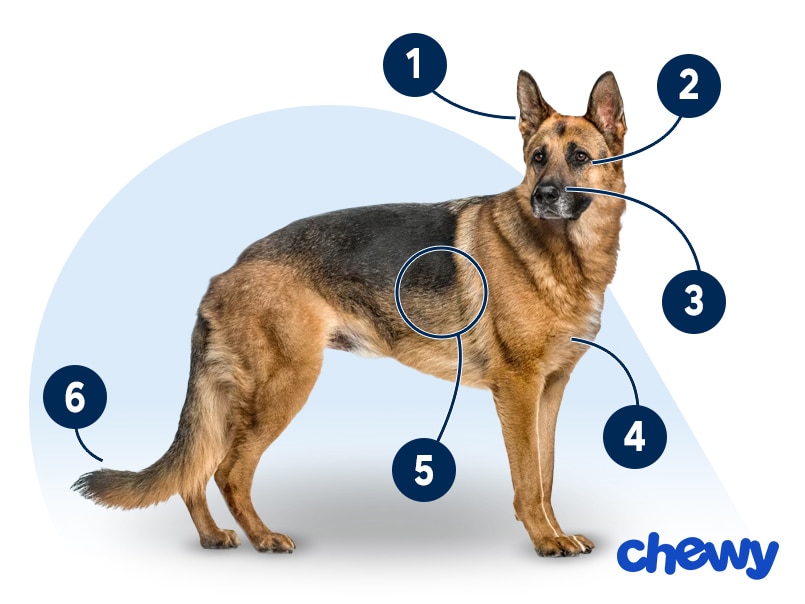
- Ears
German Shepherds are born with soft, floppy ears, but at around 5 months old, their ears naturally become pointier. The ears open toward the front and are particularly alert when the German Shepherd stands at attention.
- Eyes
Their eyes are dark and almond-shaped with an intelligent and eager expression.
- Nose
They typically have a predominantly black, square nose and a long, straight muzzle.
- Coat Length
Most German Shepherds have a medium-length double coat. The outer coat is typically dense and straight, but some may be slightly wavy.
- Coat Color
German Shepherd colors vary wildly and include black and tan, black and cream, black and red, black and silver, and even black with a few areas of brown or tan. They can also be sable, gray, blue, or a liver color, though these aren’t recognized by the American Kennel Club (AKC).
- Tail
They have a long, bushy tail with a slight hook like a saber.
German Shepherd Temperament
The German Shepherd has an unwavering loyalty. (There’s a reason they make some of the best police dogs!)
Socializing your pup is essential, and so is training. It’s your job to teach your German Shepherd puppy that most things in this world are nothing to fear (and won’t hurt their loved ones, either).
Early supervised interactions with kids, babies, and other animals are also important if you want your German Shepherd to be well-behaved around guests. Teach children how to interact appropriately with dogs, too. With the proper education, this easy-to-train pup can be a great family dog.
German Shepherds are born talkers. They will bark when they’re bored, and they’ll bark to alert you if something isn’t quite right. But training and exercise can help curb a chatty pup.
They’re also incredibly smart dogs that are at their best when they have a job to do, whether it’s working as a police or military dog, doing tracking or search and rescue, serving as a guide dog, or simply at home practicing scent work or solving puzzles for a treat.
With their family, German Shepherds will let their silly side show as they flip their toys in the air and roll around on their backs.
How to Care for a German Shepherd
German Shepherd dogs need regular grooming, plenty of exercise, and consistent training. But these pups are quick studies, and all your efforts will be rewarded with a loyal best friend.
Grooming
Training
Diet
Exercise
Environment
German Shepherd Health
The German Shepherd lifespan is 12–14 years. This breed is prone to quite a few health issues, so early awareness is key.
- Allergies: German Shepherds are prone to both seasonal and food allergies, which usually cause itching and a rash.
- Bloat or gastric dilatation-volvulus: Both bloat and gastric dilatation-volvulus (a more severe case of bloat) are life-threatening conditions and more common in dogs with deep chests. If your dog is dry heaving or if their abdomen looks distended, see a vet immediately.
- Cancer: German Shepherds can develop certain cancers, including bone, lung, intestinal, and hemangiosarcoma (malignant tumors that develop in blood-rich areas like the heart or spleen). Treatment includes chemotherapy, radiation, or surgery.
- Degenerative myelopathy: A neurological disorder that affects the spinal cord, degenerative myelopathy leads to paralysis of the hind legs over time. Early signs include leg weakness and difficulty standing. There is no cure, but physical therapy can help.
- Dilated cardiomyopathy: Dilated cardiomyopathy is a genetic condition where the heart enlarges, possibly resulting in heart failure. Diagnosis is based on an echocardiogram and treatment is often daily medication.
- Elbow and hip dysplasia: With elbow dysplasia and hip dysplasia, the joint doesn’t fit properly. According to the Orthopedic Foundation of Animals, about 20% of German Shepherds have hip dysplasia. Treatment might involve weight loss, reduced activity, joint supplements, physical therapy, pain meds, or surgery.
- Epilepsy: German Shepherds are prone to seizures caused by epilepsy, which typically begins between 6 months and 5 years of age. It’s treated with medication.
- Exocrine pancreatic insufficiency: In this condition, the pancreas does not produce enough enzymes to digest food. While there is no cure, treatment with pancreatic enzyme supplements can be highly effective.
- Pannus: Pannus is a disease that causes abnormal tissue to form in the eyes. It is painful and can lead to blindness, so beware of eyes that become cloudy or red.
German Shepherd History
In the late 1800s, Captain Max von Stephanitz set out to create the perfect German herding dog, capable of keeping sheep in line and protecting them from wolves. He cross-bred different dogs from northern and central Germany and created the first club devoted to German Shepherds.
When herding became less necessary in the 1900s, von Stephanitz suggested that German Shepherds would make the ultimate K9 or police dog.
In 1908, the German Shepherd became the 60th breed recognized by the AKC, and the German Shepherd Dog Club of America was founded in 1913. Families in the U.S. fell in love with German Shepherds while watching “The Adventures of Rin-Tin-Tin” in the 1950s, though that character was based on a famous dog with the same name, born in 1918, who starred in silent films.
German Shepherd puppies generally cost about $1,500 –$3,500 from breeders, but choose a responsible one if you go this route.
You can also reach out to a German Shepherd dog rescue to adopt one a dog. Search online for a German Shepherd rescue in your area. Also keep an eye out at your local animal shelter, or search Chewy’s database of adoptable dogs.
